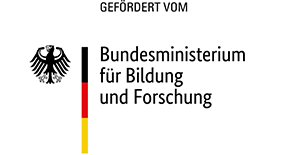Was Technologien ermöglichen könnten - Zur Bedeutung Assistiver Technologien für die Lehrer:innenbildung
What Technologies Can Make Possible - On the Importance of Assistive Technologies in Teacher Education
DOI:
https://doi.org/10.21248/qfi.120Schlagworte/Keywords
Assistive Technologien, Implementation, Universal Design, Inklusion, Barrierefreiheit, Schule, Assistive technologies, inclusion, accessibility, schoolZusammenfassung
Die kürzlich verstorbene Behindertenrechtsaktivistin Judy Heumann beschreibt die Bedeutsamkeit digitaler Medien im Sinne Assistiver Technologien (AT): „For most of us, technology makes things easier. For a person with disabilities, it makes things possible” (Edyburn, 2020, S. 11). Zur gleichberechtigten aktiven Teilhabe am Unterricht und damit an Bildung benötigen manche Schüler:innen spezielle Hilfsmittel. Assistive Technologien bieten Optionen der Partizipation (Fisseler, 2020) und lassen sich aufgrund des Fokus auf das Individuum von Barrierefreiheit und Universal Design weitestgehend abgrenzen. Der Beitrag beschreibt den Einsatz von Assistiven Technologien im schulischen Umfeld sowie die Optionen der Implementation im schulischen Alltag. Die einerseits hoch eingeschätzte Relevanz von Assistiven Technologien (Edyburn, 2020) geht gleichzeitig mit einer geringen Implementation in der Schule einher (Bouck & Long, 2021). Diesem Mangel sollte mit einer Lehrer:innenausbildung begegnet werden, die Kompetenzen hervorbringt, die die Lehrkräfte in einem transdisziplinären Team den Einsatz von Assistiven Technologien planen lässt. Der Vorschlag für ein Seminarkonzept für die erste Phase der Lehrer:innenbildung wird abschließend dargelegt.
Abstract
The recently deceased disability rights activist Judy Heumann describes the importance of digital media in terms of assistive technologies (AT): "For most of us, technology makes things easier. For a person with disabilities, it makes things possible" (Edyburn, 2020, S. 11). Some pupils need special aids in order to participate actively in lessons and thus in education on an equal footing. Assistive technologies offer options for participation (Fisseler, 2020) and can be largely distinguished from accessibility and universal design due to the focus on the individual. The article describes the use of assistive technologies in the school environment as well as the options for implementation in everyday school life. The highly rated relevance of assistive technologies (Edyburn, 2020) is accompanied by a low level of implementation in schools (Bouck & Long, 2021). This deficiency should be countered with teacher training that produces competences that allow teachers to plan the use of assistive technologies in a transdisciplinary team. The proposal for a seminar concept for the first phase of teacher education is presented in conclusion.
Downloads
Veröffentlicht
Ausgabe
Rubrik
Lizenz
Copyright (c) 2023 Igor Krstoski, Lea Schulz

Dieses Werk steht unter der Lizenz Creative Commons Namensnennung - Keine Bearbeitungen 4.0 International.


